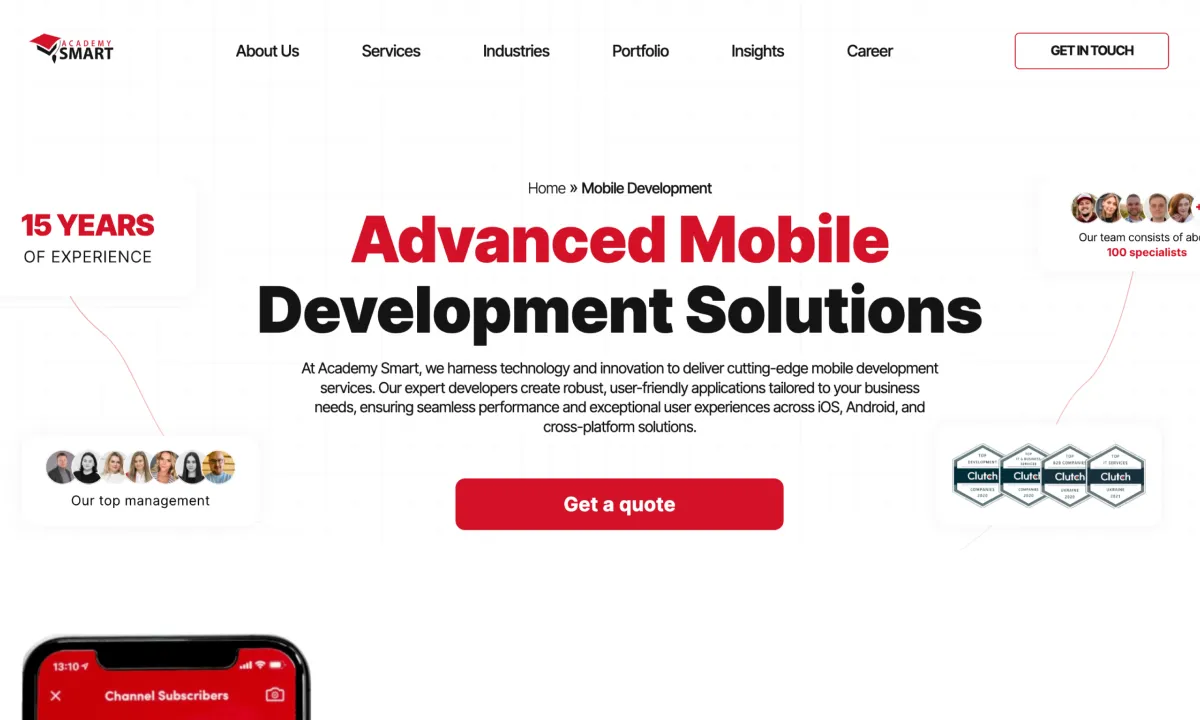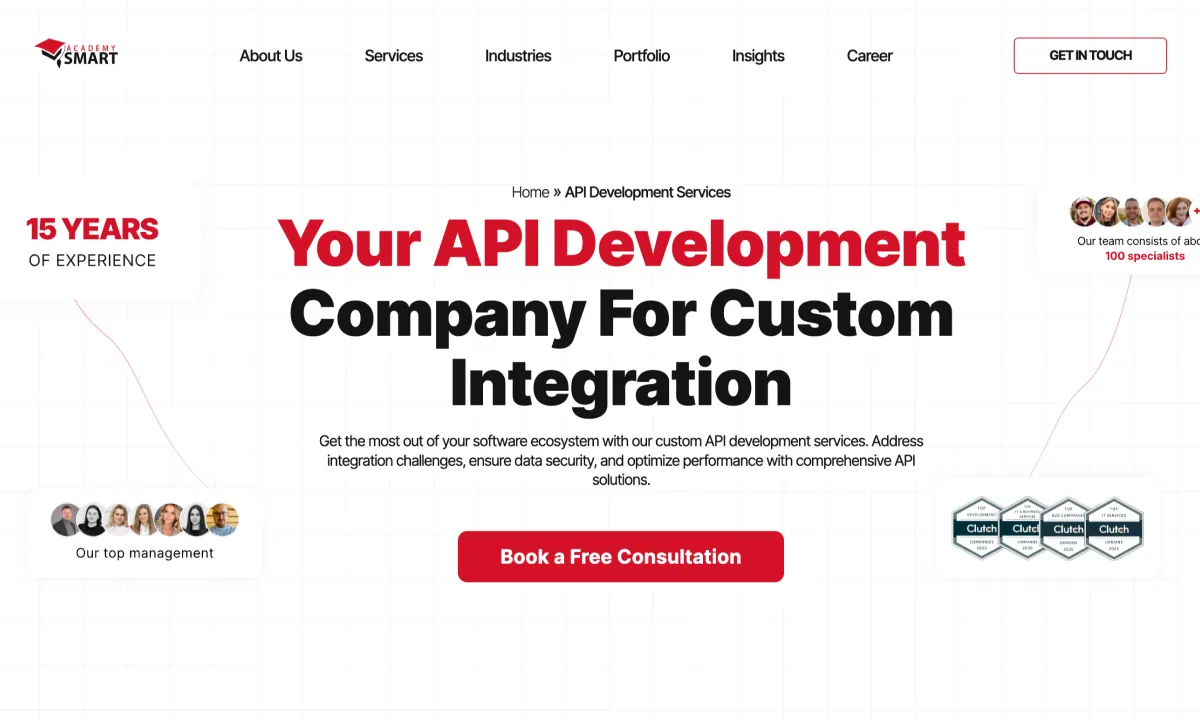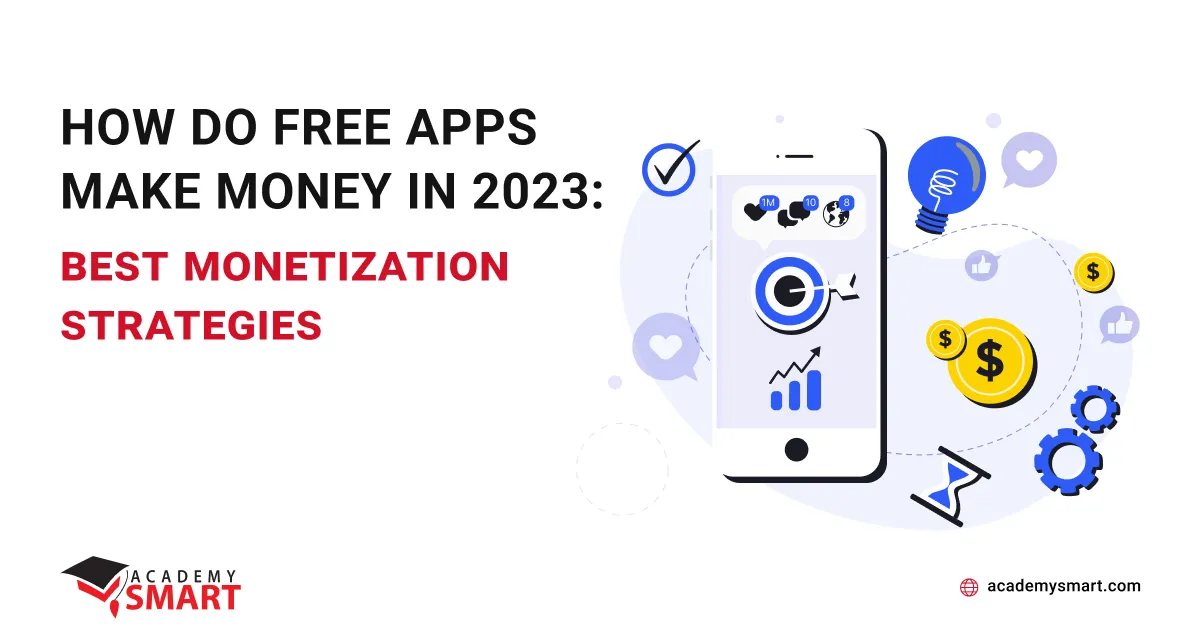
How do Free Apps make money in 2023: 8 Best monetization strategies
Contents
Creating a mobile application is a resource-intensive process that requires a good idea, competent developers, and tangible investments. Like any other business tool, it is created for profit. However, the truth of life is that the competition in the market is already high, and ordinary users prefer to use mobile apps for free. And before they pay you for your diligence, they must be attracted, surprised, and retained. Does this mean the idea of mobile app development is bad and should be abandoned? Of course not, especially considering the growth rate of the sales market in mobile applications and the general trend in the development of mobile technologies.
This article talks about whether a free app can do income, answers the question of how free apps make money, and presents the most effective monetization strategies that you can use in your case. Your mobile application can become profitable, and the main thing is to learn how to achieve that.
How much money do Free Apps make
The size of the market for applications downloaded from Apple and Google App Stores is growing steadily. Mobile users, in total, spent more than $70 billion on in-app purchases at the end of 2022, according to a recent study by Statista. At the same time, by 2026, the total income from online application monetization will be estimated at $ 230 billion if the current dynamics do not change significantly.
Another interesting fact in this report also indicates that up to 92% of applications in the Apple App Store and about 97% of applications from the Google App Store can be downloaded and, to a certain extent, used for free. Moreover, users prefer free apps. At the same time, only every second user is ready to utilize the paid functionality of applications.
Fully paid applications compete with free ones only in narrow specialized, and, as a rule, professionally oriented niches. For example, paid software in the Amazon app store does not exceed 18% of all available applications.
Shareware applications that offer a trial period of free use of the whole or limited version of the product also have a separate niche. Their part is noticeably smaller than that of freemium applications. However, the conversion rate is higher. Statistics show that only 1-30% of freemium app users transit to paid software plans, and the actual figure depends mainly on the specifics of the industry. At the same time, in the case of shareware software, it is usually 30-50% of users since their audience is initially more interested in a particular solution.
So, we see a vast predominance of free software products and a reasonably large amount of funds they bring today. What is the secret of the earnings, and how much money do free apps make?
In practice, the profit of free applications is based on various monetization strategies, among which advertising activities and multi-level subscriptions, which provide additional value for the user, are in the first place in terms of prevalence. For example, in 2022, Instagram earned $33.25 billion from various ads in its app, Netflix earned $31.6 billion from subscriptions, and the popular online shooter Fortnite earned about $6 billion from sales of premium in-game content. Of course, these high amounts are typical of the market’s titans, and the average free application in a highly competitive environment often has much more modest results. However, with a clear development plan for your project and meaningful user value, a free application can consistently generate revenue of up to $10,000 per month and even more.
Of course, each application is unique in its way and requires its approach to the formation of a monetization strategy. Equally necessary is the extent to which your software product solves your audience’s problems and satisfies their daily needs. A quality product can always bring decent proceeds, sometimes even exceeding expectations. So focus on the value you want to convey, and the rest is the technical details and step-by-step strategy. Do you still not believe that free apps can be successful and profitable? Visit our portfolio page, and real examples await you there.
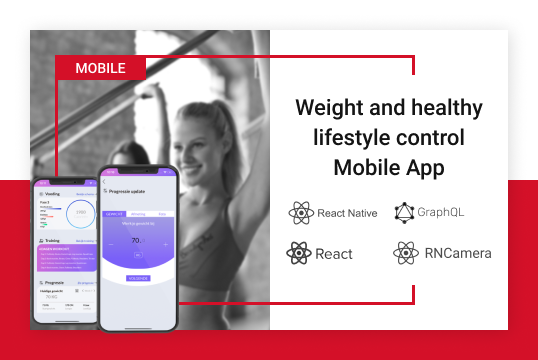
Healthcare Mobile App example
How do Free Apps make money: 8 monetization strategies
So, we already know that freeware software can make an income, and sometimes it may be significant. Now it’s time to learn how free apps make money and get acquainted with the leading monetization strategies. Of course, it is recommended to remember that in a particular case, their choice depends on the specific type of application and its audience, and these methods aren’t equally relevant, beneficial, and effective.
In-App Advertising
In-app advertising is the most known monetization strategy, displaying ads within a free app to generate revenue. This promising strategy provides precise targeting and personalization based on user demographics, interests, behavior, and other data points. Advertisers can use this targeting capability of freeware applications to reach their desired audience effectively, increasing the likelihood of ad engagement and conversions.
App owners can work with various ad networks or platforms that serve ads within their apps. Ad mediation platforms can also be used to manage multiple ad networks, optimize the ad inventory and maximize proceeds by selecting the most relevant and highest-paying ads.
The free app can earn revenue based on different pricing models, such as:
- Cost Per Impression (CPM)
Applications earn revenue for every thousand ad impressions served within their app. The CPM rate is predetermined by the ad network or determined through a bidding process. - Cost Per Click (CPC)
Owners earn money for each click made by users on the ads displayed within the app. The CPC rate is typically based on the number of clicks received by the ad. - Cost Per Action (CPA)
Apps earn income when users take a specific action after interacting with the ad, such as purchasing or signing up for a service. The CPA model is based on a predetermined commission or a percentage of the transaction value.
It is easy to track the performance of in-app advertising through analytics and reporting provided by ad networks or mediation platforms. This data helps you optimize the placement, frequency, and types of ads displayed.
In practice, developers integrate an advertising software development kit (SDK) into their app, allowing them to display advertisements from various ad networks or platforms. The SDK provides the tools and functionalities to manage and track ad impressions, clicks, and revenue.
Different ad formats can be used there, including:
- Banner Ads
These small rectangular ads appear at the app’s interface’s top, bottom, or sides. They can be static or dynamic, displaying images, text, or both. - Interstitial Ads
These are full-screen ads that appear at natural transition points within the app, such as between levels in a game or during content loading. They often offer rich media experiences, including videos, images, or interactive elements. - Native Ads
These ads blend into the app’s user interface, appearing as content that matches the app’s design and user experience. They are typically labeled as ads but are designed to integrate with the app’s content seamlessly. - Video Ads
These are short video clips playing within the app. They can be displayed as pre-roll ads before the app’s content, mid-roll ads during a user’s interaction, or post-roll ads after a user completes a task. - Rewarded Ads
These ads offer users an incentive, such as in-app currency, extra lives, or premium content, in exchange for watching a video ad. They provide users with a tangible benefit for engaging with the ad.
While in-app advertising is a popular and effective monetization strategy for free apps, there are some potential contraindications or considerations to keep in mind:
- In-app advertising, if not implemented thoughtfully, can negatively impact the app’s user experience. Intrusive or irrelevant ads, excessive ad frequency, or disruptive ad placements can lead to user frustration, decreased engagement, and potential app abandonment. Of course, the ads should align with the app’s design and aesthetics. Poorly designed or visually inconsistent ads can diminish the overall quality and perception of the app.
- This strategy may not be suitable for all app niches or target audiences. Some niches or user demographics may be more opposed to advertising, resulting in lower engagement or ad revenue. Understanding your app’s audience and ad tolerance is vital before implementation.
- The rise of ad-blocking software and user ad fatigue can impact the effectiveness of your efforts. Users may employ ad blockers to avoid seeing ads altogether, reducing the potential revenue generated from in-app ads.
- This monetization type usually provides for collecting and sharing user data with third-party ad networks. Developers must adhere to privacy regulations and obtain proper user consent for data gathering.
- At last, the application market is too competitive, and there is a limited supply of ad inventory. That can lead to dropped ad rates and reduced incomes, especially for software with lower user engagement or narrow niche audiences.
Freemium Model
The freemium model is another popular monetization strategy many apps and services use. It offers a free basic version with limited features or content while providing additional premium features or content for a fee. This type aims to attract a more extensive user base and allows users to experience the app’s value proposition before committing to a purchase, providing a low-risk entry point.
The success of the freemium model relies on demonstrating the value and benefits of the premium features to users. Owners have to articulate the advantages of upgrading to the paid version, such as enhanced productivity, improved user experience, or access to exclusive content.
The basic version is free on app stores, allowing users to download and use it without any upfront cost. It typically provides essential functionality and a subset of features that helps users to engage with the app and experience its value.
The premium content is designed to provide additional value to users and entice them to upgrade to the paid version. It may include advanced functionality, different customization options, enhanced user experience, or access to exclusive content, among other benefits. Various conversion tactics, like offering limited-time discounts, trial periods, or introductory pricing, can be employed to encourage users to upgrade.
There are several standard upgrade options for freeware software:
- One-time purchases
Users pay a one-time fee to unlock the premium features permanently. - Subscriptions
Users pay a recurring fee (monthly, yearly, etc.) to access the premium features for a specified period. Subscriptions often provide a continuous revenue stream for app developers. - In-app purchases
Users can make individual purchases within the app to unlock specific premium features they only need or content on a case-by-case basis.
To be successful in profits, app developers must carefully strike a balance between the features available in the free version and those exclusive to the premium version. The free version should provide enough value and functionality to engage users and demonstrate the app’s potential while reserving the most compelling content for the paid version.
Another task is continuously evaluating and adjusting the feature offering to maintain a value proposition that encourages users to upgrade without alienating free users. Responsive customer support and regular app updates can help foster positive user relationships and drive engagement. Indeed, loyal users are more likely to see the value in upgrading to the premium version.
Finally, app owners need to monitor user behavior, conversion rates, and user feedback to refine and optimize the freemium model. Insights gained from that can help make informed decisions about feature offerings, pricing, and conversion.
In-App Purchases
The in-app purchases strategy is a widely spread monetization approach used by free apps. It offers users a free software version while providing opportunities to purchase additional digital goods, services, or content within the app.
Users can access its core features and content without any payments when they download the free app. However, users can make in-app purchases to enhance their experience or unlock premium elements.
These in-app purchases can take various forms, such as virtual currencies, power-ups, premium content, ad removal, character customizations, or access to exclusive features. Users can browse through an in-app store or menu to explore options and select their desired digital goods or services.
In-app purchases can be categorized into different types:
- Consumable purchases are one-time-use items that get depleted after use, like virtual currency or power-ups.
- On the other hand, non-consumable purchases are items that users buy once and can continue to use indefinitely, such as unlocking a premium version of the app or gaining permanent access to additional content.
- Additionally, users can subscribe to recurring payments for a specified period, like monthly or yearly, to access unique features or exclusive content through subscriptions.
Developers carefully determine the pricing of in-app purchases, considering factors such as perceived value, market trends, and the purchasing power of the target audience. Promotions, discounts, or limited-time offers can be utilized to incentivize users and drive conversion rates.
Ensuring a secure and transparent user experience is essential in the in-app purchase process. App stores often provide security measures to protect users’ financial information during transactions. Developers must comply with store guidelines and implement secure payment systems to safeguard user data. Naturally, your application requires those experts with specific experience and knowledge. How to assemble such a team of IT professionals will tell the article Outsourcing vs Outstaffing: What To Choose.
To optimize the strategy, developers monitor in-app purchase data and user behavior. Analyzing conversion rates, purchase frequency, and user feedback helps refine the offerings and pricing strategies. Transparent communication about in-app purchases, including precise information about costs and terms, is crucial for building user trust.
Subscriptions
We have already mentioned the subscription strategy several times in passing. It provides users with a free version of the app with limited access to its content while allowing them to choose a paid plan or membership for enhanced benefits. This model provides a sustainable revenue stream for app owners and ensures a continuous flow of value to subscribers.
When users download the free app, they can explore its basic functionality and experience its value firsthand. However, users must subscribe to one of the available subscription plans to unlock additional features, exclusive content, or custom services. And applications may offer different options to cater to diverse user preferences and wallets, often with varying durations and pricing. They can include advanced functionality, an ad-free experience, exclusive content, priority support, or unique customization options.
The app store’s payment system handles the billing process seamlessly, ensuring a convenient experience for subscribers. They are billed at regular intervals (monthly, yearly, etc.) for the duration of their subscription. And it’s a spreading practice to offer trial periods or introductory pricing to encourage users to buy premium offers, providing discounted rates during an initial period and incentivizing users to explore the paid features deeper.
Users can often manage their subscriptions through the app or app store account settings, including modifying or canceling their plans. Offering convenient subscription management options enhances user satisfaction and retention.
Developers must continuously deliver value to retain subscribers. They should provide regular updates, new features, and fresh content to keep subscribers engaged and ensure they perceive ongoing benefits from their buys.
Monitoring essential metrics, such as subscriber churn rate, conversion rates, and user feedback, helps owners optimize the business tactic. By analyzing this data, they can refine pricing, content offerings, and the overall subscription experience to meet user needs and preferences better.
Sponsorship
This approach utilizes partnering with sponsors to generate income. With this strategy, app owners secure deals where other businesses or organizations pay to promote their brand or sell their goods within the free application. It can monetize the app without relying on direct user payments creating a stable revenue channel for the app owner and increasing brand awareness for the sponsor.
When you opt for this model, you put sponsored content seamlessly into the app’s user experience. That may include sponsored ads, branded placements, specific goods, or features that align with the app’s target audience and niche. But the sponsored content has to be carefully integrated without disrupting the app’s functionality or compromising the user interface.
App owners typically collaborate with sponsors whose products or services resonate with their app’s user base. For example, a fitness app may partner with a sports equipment brand, while a recipe app may collaborate with a food delivery service. This alignment ensures that the sponsored content adds value to users and feels relevant to their interests.
The success of the sponsorship strategy relies on maintaining a balance between the app’s core functionality and sponsored content. Its transparent disclosure is crucial to maintain trust with users, ensuring they understand the nature of the promotional material. Also, owners must monitor sponsored content’s performance and engagement metrics. That includes tracking impressions, click-through rates, conversion rates, and user feedback. By analyzing them, you may evaluate the effectiveness of the partnership and make necessary adjustments to optimize revenue and user satisfaction.
Data Monetization
The particular way to generate revenue is to gather and analyze user data to derive valuable insights. App owners may utilize them to offer targeted advertising opportunities to third-party stakeholders.
App owners can partner with data analytics firms or ad networks specializing in utilizing the collected user data. These collaborations provide access to a network of advertisers and businesses looking to leverage user insights for their marketing campaigns or strategic decision-making.
The data monetization strategy allows apps to get incomes without directly charging users for access. Conversely, they must prioritize user privacy and transparency to maintain their trust and ensure responsible data handling. When you adopt the data monetization approach, you should implement mechanisms for agreement of gathering user data within the app, aggregating and anonymizing them.
Affiliate Marketing
This strategy is a suitable method employed by free apps to give profit by partnering with affiliate programs. Your app can promote products or services from third-party vendors within and earn a commission for each successful referral or sale. Of course, the deal’s success heavily relies on their relevance and appeal to the app’s audience. So, the right decision is to select affiliate programs offering products or services that complement their app’s theme or cater to their users’ interests, ensuring a higher likelihood of engagement and conversion.
If you choose this approach, you establish partnerships with affiliate networks that align with the app’s target audience and niche. They often provide unique affiliate links or promotional materials that can be integrated easily.
These links may appear as banners, text links, or within specific content sections related to the promoted products or services. To make them profitable, developers should place them strategically, attracting users’ attention and providing compelling content or recommendations. It can include detailed product reviews, comparisons, or informative articles that help users make informed buying decisions. Your app earns a commission when users click these referral links and purchase or complete another desired action.
To effectively implement the affiliate marketing strategy, app owners track and analyze the performance of their affiliate links. They monitor click-through rates, conversions, and the overall earnings generated through affiliate referrals. This data helps optimize their efforts and refine their promotional strategies to maximize proceeds.
Crowdfunding
A crowdfunding strategy is a modern way to get money by seeking financial support from many people who desire to contribute to the free app’s development, maintenance, or expansion.
When developers opt for the crowdfunding model, they typically set up a campaign on a specific platform, such as Kickstarter or Indiegogo. They create a compelling pitch that outlines the app’s unique features, benefits, and the value it provides to users. Also, they often offer rewards to motivate people to donate. No doubt, they aim to reach a broader audience and build excitement around their app, promoting extensively through various channels, including social media, online communities, and targeted marketing efforts.
Individuals who resonate with the app’s vision, concept, or potential benefits can financially support the campaign. Donations can range from minor to more considerable sums, depending on the person’s interest and financial capacity. In return, contributors may receive prizes or inducements based on pledge amounts, such as exclusive access to new app features, merchandise, or unique personalized experiences.
The crowdfunding strategy allows developers to tap into the power of collective support to fund their app’s development and growth. It provides financial resources and creates a sense of community and engagement around the app. Backers become advocates for the app, spreading the word and helping to increase its user base.
In their turn, app owners must also deliver on their promises to backers. Once the crowdfunding campaign reaches its funding goal, they utilize the income raised to enhance the app’s features, expand its functionalities, or meet other objectives outlined. Regular updates and open communication with donors help foster a strong relationship and maintain the trust of the supportive community.
Of course, crowdfunding can hardly be called a predictable channel for generating profits. Its success hinges on a firm confidence in the benefits of your application, effective communication, and engagement with the campaign’s supporters. You should provide regular reports of the app’s progress, milestones achieved, and any challenges faced throughout development. This transparency helps build trust and maintain the community’s interest in donation.
Indeed, not every initiative deserves public approval and donation of money. However, competent efforts to present your project, honesty, and openness can suddenly bring stunning financial success.

Top 8 monetization strategies for Free Applications
How to choose the best Free App monetization strategy: 5 steps
Choosing the best monetization strategy for a free app can depend on various factors, including the app’s target audience, its niche, the nature of its content or functionality, and the company’s business goals.
Remember, its selection is not a one-size-fits-all approach. It requires a deep understanding of your app, user habits, industry trends, and ongoing experimentation to find the right balance between generating revenue and delivering a satisfying user experience.
Step 1. Understand your app and target audience
Conduct thorough research and analysis of your app, its features, and its target audience. Understand your app’s value proposition, what makes it unique, and what problem it solves for users. Then, identify your target audience’s demographics, interests, and behavior patterns. Determine what motivates them to use your app and what value they get from it.
Knowing your audience will help you assess their purchasing power and identify related areas of interest that you can use to make money. You will understand how tolerant it is to ads, what format of advertising content can be acceptable, whether your audience is ready to use the paid services of your application, and whether they want to donate.
Step 2. Consider the app’s nature and user experience
Evaluate the nature of your app and how users interact with it. Assess if integrating ads or in-app purchases would enhance or disrupt the user experience. Consider your app’s content or services and whether they lend themselves to specific monetization strategies. Of course, a lot here depends on the niche industry of your application and the people who use it. For example, a gaming app might benefit from in-app purchases for power-ups or virtual items, while a content-based app might consider a subscription model or native ads.
Step 3. Research competitors and industry trends
Keep an eye on industry trends and evolving user preferences. Stay updated with the latest monetization practices and identify emerging opportunities aligning with your app’s goals.
How do free apps make money for your competitors? Look for successful apps in your niche and study their strategies. It will give you valuable insight and point you to opportunities you may not have seen before.
Step 4. Define your revenue goals and appropriate metrics
Set clear revenue goals for your app and define the key performance indicators (KPIs) that align with them. They should include metrics such as user engagement, retention, conversion rates, or average revenue per user (ARPU).
Understand how each monetization strategy can impact these metrics. Evaluate which approach has better potential to generate the desired profit while maintaining a positive user experience and achieving other business aims.
Step 5. Test and iterate
Experiment with different monetization strategies in a controlled manner. Implement A/B testing or pilot programs to measure the effectiveness and user response to each method. Explore content changes and develop new user interface features to implement them. Feel free to change developers if their expertise does not allow you to unlock the full potential of your application to bring income and delight your audience.
Monitor the performance of each strategy closely and gather user feedback. Analyze the data to identify which approach yields the best results regarding proceeds, user satisfaction, and overall app performance. Iterate and refine your chosen strategy based on the insights gained. Continuously optimize and adapt your monetization approach to ensure it aligns with the evolving needs of your app and its users.
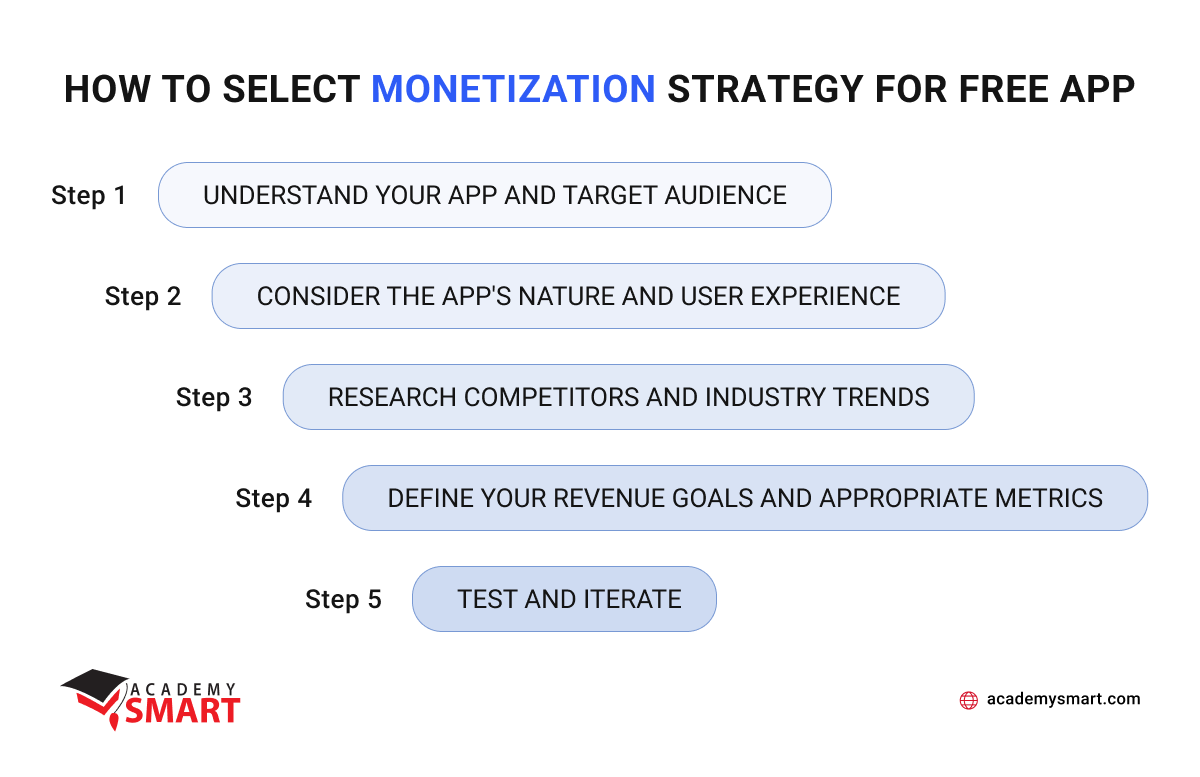
Algorithm of monetization strategy selection
How Academy SMART can help you
Having developed custom software for over 13 years, our team has gained rich and varied experience creating enterprise applications for different purposes. Therefore, by getting acquainted with the client’s ideas and existing applications, our business analysts can provide competent assistance in finding a suitable application monetization strategy or beneficial correction of the current one.
Available to you as dedicated teams or as IT outstaffers, Academy Smart’s developers will ensure the code generation and efficiency of your software product monetization algorithms. Whether you need to optimize the user interface for native advertising, create a multi-level hierarchy of roles and accesses, or seamlessly integrate payment systems into your app, contact Academy Smart and multiply your earnings.
How do Free Apps make money: Frequently Asked Questions
Do Free Apps make more money than paid?
Free apps usually have a more extensive user base and monetization opportunities, while paid apps generate revenue directly from each user upfront. The income success of an app, regardless of its pricing model, depends on factors such as user engagement, value proposition, and effective monetization strategies.
Why are so many Apps free?
People primarily look for a free solution to their problems. But freeware applications may get monetization through alternative means such as in-app advertising, in-app purchases, or subscriptions.
Book a free consultation

Reach out to start talking today!

